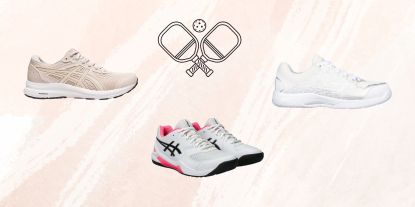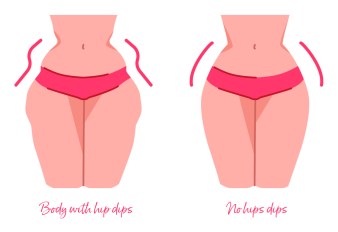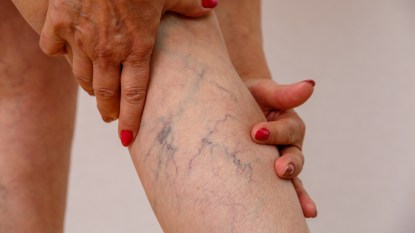Can Energy Gels Help You Power Through a Long Workout? Yes — If Taken Correctly
These gels are packed with energy — literally.

Do you ever lose your luster halfway through a long workout? That’s because intense, prolonged exercise can cause your body to run out of glycogen. This form of glucose is an essential source of energy stored in your liver and muscles — and depleting glycogen levels makes it harder to maintain physical intensity. Carbohydrates can work as “master fuel” to restore these glycogen levels, as your body digests carb-rich foods and drinks and turns them into glucose. Unfortunately, complex carbs like oats and whole grains take a while to digest, making them less than ideal to consume before or during a workout for an energy boost.
A possible solution? Try energy gels. They contain simple, easy-to-digest carbs that may help you complete a lengthy workout without fading. Keep reading to get the scoop on energy gels, learn the recommended way to consume them, and determine how to pick the best one for your fitness needs.
What are energy gels made of?
Energy gel are carbohydrate-rich products that contain simple sugars such as maltodextrin and fructose. Since your body can quickly digest these sugars, they provide you with a speedy energy boost necessary to sustain a long workout. The exact carb content for energy gels differs for each brand; however, most gels will range between 20 to 25 grams of carbs per one- to 1.5-ounce serving. This amount is greater than the 4 to 8 gram carb content found in a 100-milliliter serving of a sports drink.
Despite their benefits, energy gels aren’t meant to be used in all cases. These gels are specifically designed for runners, cyclists, swimmers, and/or anyone who exercises for an hour or longer. Taking these gels for a shorter workout puts you at risk for overexertion — potentially resulting in pain and injuries. Additionally, it’s best to know the potential risks of energy gels before taking them for prolonged exercise.
What are the health risks associated with taking energy gels?
Energy gels can be taken right before or during exercise, depending on your body’s needs. However, registered dietitian Katherine Patton, MEd, RD, CSSD, LD, warns that the gels’ sugar content can do more harm than good if consumed incorrectly. “Energy gels contain a concentrated amount of sugar, so taking them too quickly could cause an upset stomach,” she explains to Cleveland Clinic. “To prevent this, wash down your energy gel with sips of water [as you’re taking it].”
Patton notes it’s important to develop a fueling strategy for when and how many energy gels to consume — since it’ll vary for everyone. “Though energy gels provide needed fuel, remember that what works for one athlete might not work for another. Each runner absorbs and processes carbohydrates at a different rate,” she says. Keeping the health risks in mind will help you decide how to pick the best energy gel for your workout.
How do you decide on the best energy gel?
There are many energy gels out there to choose from. Here are five things you should pay attention to when buying energy gels, according to Healthline:
- Carbs per serving: The National Academy of Sports Medicine notes consuming 30 to 60 grams of carbs per hour is generally recommended for longer workouts. Since the carb content of energy gels is lower than 30 grams per serving, calculate the right amount to take based on the duration of your workout.
- Sugar source(s): The carbohydrates in most energy gels are derived from simple sugars such as maltodextrin and dextrose. However, you may also find honey or maple syrup on the ingredients list, as they’re natural sweeteners and contain carbohydrates.
- Added ingredients: Gelling agents such as xanthan gum and gellan gum help create the gels’ gelatinous texture. Avoid gels with excess amounts of artificial sweeteners, colors, additives, and preservatives if you prefer a more natural product. A clean energy gel to try: Maurten Gel 100 (Buy a 12-pack from Maurten.com, $43.20)
- Caffeine content: Energy gels usually contain caffeine, as the stimulant is associated with helping boost athletic performance. But the side effects of ingesting too much caffeine can include insomnia and restlessness. If you’re sensitive to caffeine, opt for a caffeine-free gel like the Honey Stinger Organic Fruit Smoothie Energy Gel (Buy a 12-pack from Amazon, $17.88) to stay alert while exercising without adverse side effects.
- Electrolytes: Some gels contain electrolytes or essential minerals such as potassium and calcium; these are an added benefit, since they will help you maintain hydration and regulate muscle contractions.
Should energy gels be refrigerated?
Keeping energy gels in the fridge may cause the mixture to thicken, which makes it harder to swallow. Instead, store the gels at room temperature and away from direct sunlight. Then, grab your desired amount of gel packs when it’s time to exercise.
The Bottom Line
Thanks to energy gels, it’s easy to power through a long workout. But as always, you should speak with a doctor before trying a new health product to ensure that it won’t interfere with your diet or medications.
Staying energized isn’t just necessary for exercise — it’s important throughout the entire day. Check out our story on how healthy foods may cause fatigue to discover more about how your diet is linked to vitality.
This content is not a substitute for professional medical advice or diagnosis. Always consult your physician before pursuing any treatment plan.













